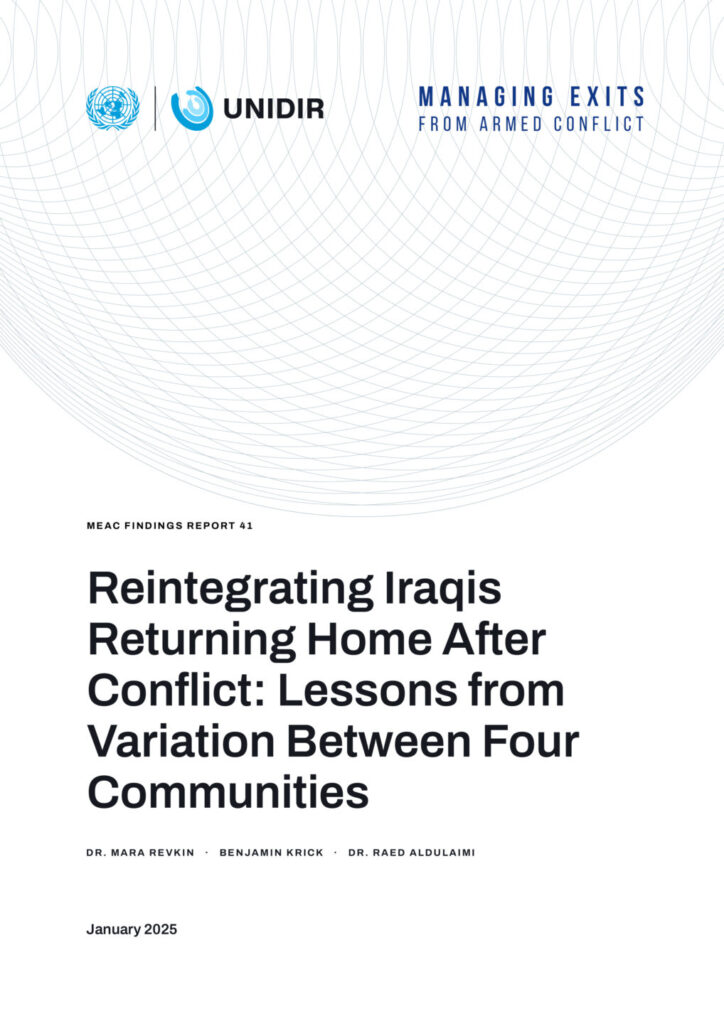This report examines local variation in community attitudes concerning the return and reintegration of displaced persons with perceived or actual ties to the Islamic State in Iraq and the Levant (ISIL). It studies four locations: Al Qaim (Anbar governorate), Habbaniya (Anbar governorate), Tuz Khurmato (Salah al-Din governorate), and Mahalabiya (Nineveh governorate). It is based on 2022 household survey data collected by UNIDIR's Managing Exits from Armed Conflict programme in partnership with UNDP.
Given how community receptivity is driven by local dynamics - experiences during the conflict, the role of the state versus tribes and militias in the area and the number of returnees in the community - it becomes clear that a blanket approach to community outreach is not likely to be effective. Return policies and reintegration programming must consider the specificities of local communities and their internal dynamics. Messages and programmes crafted to specific contexts and working with hyper-local partners to ensure situational awareness are therefore crucial in supporting returnees’ social and economic reintegration, and social cohesion more broadly.
Citation: Mara Revkin, Benjamin Krick and Raed Aldulaimi, "Reintegrating Iraqis Returning Home After Conflict: Lessons from Variation Between 4 Communities,” Findings Report 41, UNIDIR, Geneva, 2024, https://doi.org/10.37559/MEAC/25/01.
